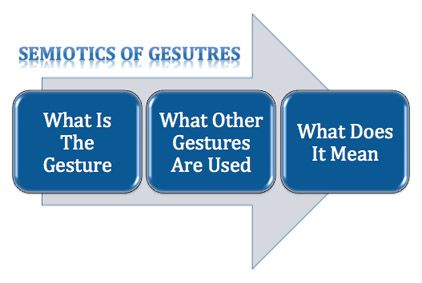Body Language
You Did What With Your Hands?
You do not have to point to get your point across.
Posted July 15, 2012
Hand gestures and hand placement are important elements to be aware of if you are intent on being a great communicator. We use them all the time, yet either their importance is often discounted or they are stated as being the obvious.
What do I mean?
They are important as they can help us be more effective communicators or contribute to misunderstandings. The obvious comments are often “of course that gesture means that”; however, are you fully aware of the gestures you use and those used by others?
Regardless of your profession, not only what you say is important but also what you do. This article gives some examples of gestures and hand placement that often can reflect an emotional state a person is feeling, as well as those used to compliment or contradict the verbal message being delivered.
This article offers tips in multiple sections. Each one can be read and practiced on its own, while collectively it gives a good starting point (pun to be intended) to becoming aware of the important role of hand gestures and placement.
First: I approach nonverbal communication, and for this article strictly gestures, from a social semiotic perspective. What does that mean? It means approaching it from 3 steps:
- Identify the gesture used (this is semantics for the geeks out there like me)
- Determine how is the gesture used in combination with other gestures (syntactics)
- Explore what the gesture means, especially given the context of the situation (pragmatics)
Feelings or Communication?

Feelings or Communication?
Is the gesture congruent with the words being spoken? Often when the gesture being used does not match with the words being spoken, it is the gesture that people tend to believe to be more truthful. Have a look at the images below and imagine each person saying they feelconfident. Which is more believable?

"Hands in the pocket."
Yet more "hands in the pocket." Intentional or Unintentional? 

Yet more "hands in the pocket."
Intentional or Unintentional?
Being aware of hand gestures does not equal to telling people and pointing out (yes, pun intended once again) what you think it means based a certain PsychologyToday.com article you read recently. Rather, observing them helps you prepare what to say or do next. Remember the goal is to be a more effective communicator, not to be annoying.
Also, in regards to intentional or unintentional gestures, ask yourself if the message is being received the way you intended? Consider varying gestures based on cultures and geographic location. The “V” peace sign has a much different meaning based on which way you palm is facing (towards you or the other) and many of the UK and Aussie readers can vouch for that.
A more everyday example includes pointing your finger. If your intended use of pointing is the gesture form of the exclamation point to convey you really mean what you are saying however the other person could very well think you are being rude, condescending or confrontational. No matter what you intention is, it is the person decoding it that has greater importance.
Hand To head or Head to Hand? Ever notice the difference between the two? When your hand is brought to your head, it can show interest while the latter often is a sign of boredom. If you want to make the impression that you are interested in the other person when they are speaking, avoid using the “head to hand” option.
Which version do you see below?

Is she displaying interest?
Did you really need to point your finger? Pointing can be confrontational especially when it is directed towards the person you are interacting with. When I think about pointing, it reminds me of previous teachers or my mother yelling at me (which is negative!). Consider this next time you choose to point at someone. As an alternative, consider doing “The Obama”(second picture).


What’s the point (pun intended!) of this and how does it apply to what you do both professionally and in your social life? Well, firstly being aware of your own use of gestures can help you be more effective. Did you point and didn’t realize it? Did you notice the person say “I am fine with that” yet at the same time they started fidgeting with their necklace?
Nonverbal communication is not a definitive science but it is a science nonetheless. I look at it as offering another viewpoint, often one that is subtle and subconscious yet can help you communicate more effectively as well as understands others- especially when you are trying to assist them during a conflict.
For more on this have a look at a brief Prezi presentation on semiotics and nonverbal communication [HERE]. It has lots of finger pointing!
Get more pictures, information, research and news on nonverbal communication by following Jeff Thompson on twitter: @NonverbalPhd




